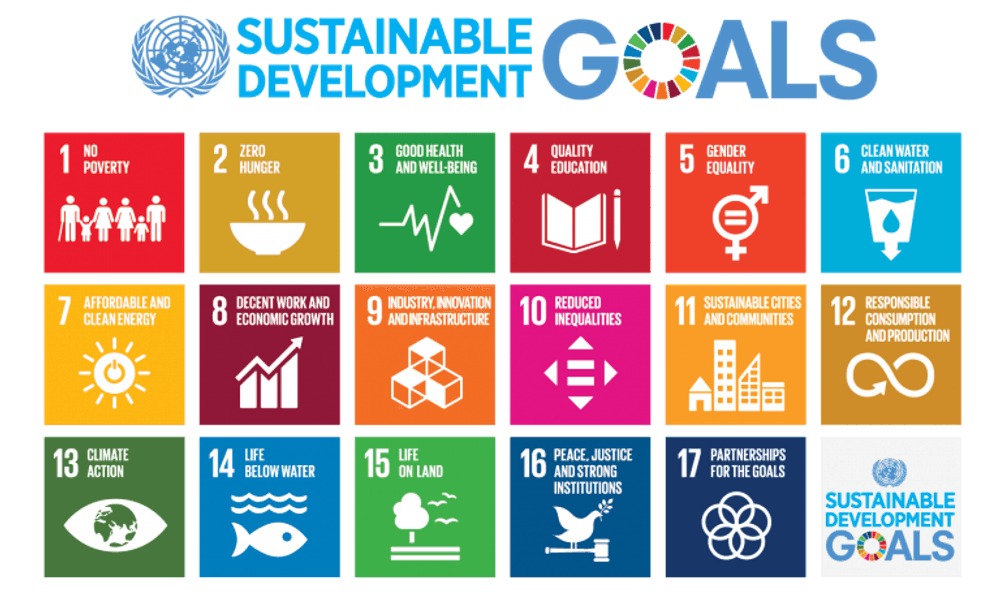
Sustainable Development: More Than Climate Change
At every COP the stakes are higher and the call for action louder. The road to meeting the Paris Agreement is paved with pledges, reports and analysis showing the state of the climate emergency, visualizing scenarios based on different levels of commitment. 2021’s COP26 in Glasgow delivered an agreement which, as expected, has summoned both positive and more critical responses.
Politicians were joined by an ever-growing group of diverse stakeholders from the global community, all hoping to hear firm and actionable pledges by the world’s leaders, and each trying to create attention for their focus groups.
As it stands today, it looks as if the world is heading to a 1.8°C temperature rise by 2100. While this gets us (just) below the 2°C goal outlined in the Paris Agreement, it’s now clear even that will have disastrous effects on every country and the only target to work towards is to stay at or below 1.5°C. A massive task, knowing that we are already at 1.2°C.
For a few weeks, all eyes were on the COP negotiations. Climate change was front and center of most media coverage. But is climate change the key issue for the next decade?
The next wave?
The effect of climate change on biodiversity is unequivocal. Rapid climate change undermines ecosystems’ ability to adapt, leading to an increase in biodiversity loss. Biodiversity collapse, however, is not just linked to climate change, but also to direct human activity such as deforestation and land use. Experts warn us that the next even bigger wave to hit humanity after climate change is biodiversity collapse, and while the visual is clear, it should be even more clear that this wave is already upon us and needs to be addressed as urgently as climate change.
Human rights
Climate change and biodiversity collapse have a huge impact on people. We know certain groups are disproportionally hit, even though they contribute the least to the issues.
In July 2022, the UN General Assembly adopted a resolution recognizing that access to a clean, healthy and sustainable environment is a human right.
Climate change already creates climate refugees and worsened conditions for vulnerable groups, including climate change induced slavery. Growing awareness and attention to addressing the impacts of climate change and an unhealthy environment on people, and especially highly vulnerable groups, is crucial.

But so is reminding ourselves that human rights are also at risk simply because of what people do to other people. While climate change may induce slavery, the decision to exploit a person is still essentially made by another person. The ILO has reported an increase in child labor during the COVID-19 pandemic, reversing the progress made over the past 20 years. Forced labor has become an urgent topic for import bans in the US and recently Canada as well, and NGOs have taken action against brands in Europe.
Across the world, due diligence legislation is on the rise. Some are focused on specific issues such as modern slavery or child labor, while others cover the broadest spectrum of labor, human rights, and environmental areas, such as the EU's Corporate Sustainability Due Diligence Directive (CSDDD). At UN level, the Intergovernmental Working Group from the Human Rights Council delivered a third draft of a legally binding UN Treaty on Business and Human Rights, aimed at regulating the activities of transnational corporations and other business enterprises.
Decade of action
So, yes, sustainability is more than climate change, more than biodiversity loss. And at the same time, it is exactly those things. Systems thinking, understanding how everything is linked, is complex and yet vital when looking at sustainable development. Focusing on climate change, or biodiversity or modern slavery, is necessary to tackle it with focus and determination. We cannot, however, afford to lose sight of all the other development challenges the world faces.
The UN Sustainable Development Goals provide this framework, articulating the world’s sustainable development emergencies, inspiring action and monitoring progress. It provides a global language to be used across borders and boundaries, of whatever kind.
The SDGs are there to remind us of the work ahead, our path towards and beyond 2030, from goal 1 to goal 17. Not just during Global Goals Week and SDG Summits, but every day of the year.

Related Articles


